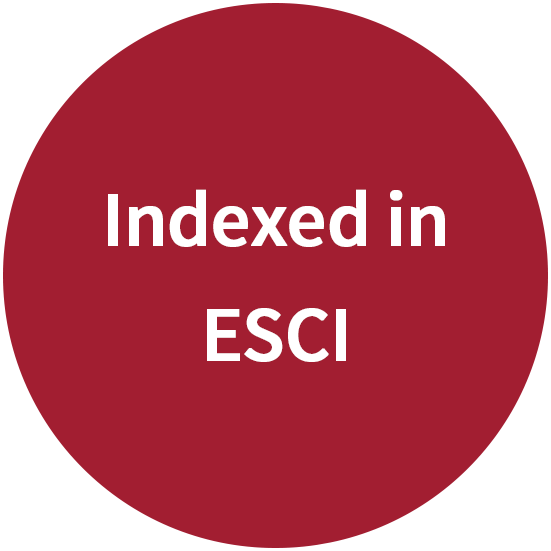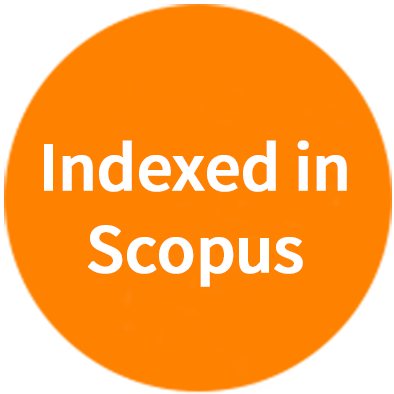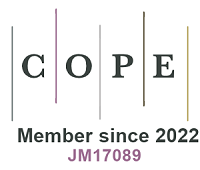REFERENCES
1. Forsyth IA, Wallis M. Growth hormone and prolactin--molecular and functional evolution. J Mammary Gland Biol Neoplasia. 2002;7:291-312.
2. Salmon WD, Daughaday WH. A hormonally controlled serum factor which stimulates sulfate incorporation by cartilage in vitro. J Lab Clin Med. 1957;49:825-36.
5. Frasier SD. Human pituitary growth hormone (hGH) therapy in growth hormone deficiency. Endocr Rev. 1983;4:155-70.
6. Ching J, Lee PD. Brief review and commentary: diagnosis of pediatric pituitary disorders. Pituitary. 2007;10:327-33.
7. Hunter WM, Greenwood FC. Studies on the secretion of human-pituitary-growth hormone. Br Med J. 1964;1:804-7.
8. Raiti S. The national hormone and pituitary program (NHPP) historical perspective. Acta Endocrinol Suppl (Copenh). 1986;279:66-70.
9. Frasier SD. The not-so-good old days: working with pituitary growth hormone in North America, 1956 to 1985. J Pediatr. 1997;131:S1-4.
11. Cronin MJ. Pioneering recombinant growth hormone manufacturing: pounds produced per mile of height. J Pediatr. 1997;131:S5-7.
12. Johnson IS. The trials and tribulations of producing the first genetically engineered drug. Nat Rev Drug Discov. 2003;2:747-51.
13. Hintz RL. The prismatic case of Creutzfeldt-Jakob disease associated with pituitary growth hormone treatment. J Clin Endocrinol Metab. 1995;80:2298-301.
14. Graber EG, Hosseini SMH, Wilson DM, Rogol AD. The unfolding story of protein misfolding causing alzheimer disease in recipients of human pituitary growth hormone. J Endocr Soc. 2025;9:bvaf029.
15. Hintz RL. The importance of the National Cooperative Growth Study (NCGS). In: Carel J-C, Kelly PA, Christen Y, editors. Deciphering Growth. Research and Perspectives in Endocrine Interactions. Berlin, Heidelberg: Springer; 2005. p. 131-2.
16. Allen DB. Growth promotion ethics and the challenge to resist cosmetic endocrinology. Horm Res Paediatr. ;87:145-152.
17. Cuttler L, Silvers JB. Growth hormone and health policy. J Clin Endocrinol Metab. 2010;95:3149-53.
18. Carlson GA, Prusiner SB. How an infection of sheep revealed prion mechanisms in Alzheimer’s disease and other neurodegenerative disorders. Int J Mol Sci. 2021;22:4861.
19. Fink J, Schoenfeld BJ, Hackney AC, et al. Anabolic-androgenic steroids: procurement and administration practices of doping athletes. Phys Sportsmed. 2019;47:10-4.
20. Prader A, Labhart A, Willi H. Ein syndrom von adipositas, kleinwuchs, kryptorchismusund oligophrenie nach myatonieartigem zustand im neogeborenenalter. Schweiz Med Wochenschr 1956;86:1260-1. (in German) Available from: https://scholar.google.com/scholar_lookup?&title=Ein%20Syndrom%20von%20Adipositas%2C%20Kleinwuchs%2C%20Kryptorchismus%20und%20Oligophrenie%20nach%20myatonieartigem%20Zustand%20im%20Neogeborenenalter&journal=Schweiz%20Med%20Wochenschr&volume=86&pages=1260-1261&publication_year=1956&author=Prader%2CA&author=Labhart%2CA&author=Willi%2CH (accessed on 2025-6-23).
21. Pozzilli P, Khazrai YM. “La Monstrua Vestida”, a case of Prader-Willi syndrome. J Endocrinol Invest. 2005;28:199.
22. Eiholzer U, Lee PDK. Appendix A: first published report of Prader-Willi syndrome. In: Butler MG, Lee PDK, Whitman BY, editors. Management of Prader-Willi Syndrome. 4th ed. Berlin, Heidelberg: Springer; 2022. p. 487-90.
23. Zellweger H, Schneider HJ. Syndrome of hypotonia-hypomentia-hypogonadism-obesity (HHHO) or Prader-Willi syndrome. Am J Dis Child. 1968;115:588-98.
24. Ledbetter DH, Riccardi VM, Airhart SD, Strobel RJ, Keenan BS, Crawford JD. Deletions of chromosome 15 as a cause of the Prader-Willi syndrome. N Engl J Med. 1981;304:325-9.
25. Butler MG, Palmer CG. Parental origin of chromosome 15 deletion in Prader-Willi syndrome. Lancet. 1983;1:1285-6.
26. Nicholls RD, Knoll JH, Butler MG, Karam S, Lalande M. Genetic imprinting suggested by maternal heterodisomy in nondeletion Prader-Willi syndrome. Nature. 1989;342:281-5.
27. Holm VA, Cassidy SB, Butler MG, et al. Prader-Willi syndrome: consensus diagnostic criteria. Pediatrics. 1993;91:398-402.
28. Heimdörfer D, Vorleuter A, Eschlböck A, et al. Truncated variants of MAGEL2 are involved in the etiologies of the Schaaf-Yang and Prader-Willi syndromes. Am J Hum Genet. 2024;111:1383-404.
29. Eiholzer U, Lee PDK. Medical considerations. In: Butler MG, Lee PDK, Whitman BY, editors. Management of Prader-Willi Syndrome. 4th ed. Berlin, Heidelberg: Springer; 2022. p. 123-58.
31. Forbes GB. A distinctive obesity: body composition provides the clue. Am J Clin Nutr. 1997;65:1540-1.
32. Eiholzer U, Bachmann S, L’Allemand D. Is there growth hormone deficiency in prader-willi Syndrome? Horm Res. 2000;53:44-52.
33. Eiholzer U, Blum WF, Molinari L. Body fat determined by skinfold measurements is elevated despite underweight in infants with Prader-Labhart-Willi syndrome. J Pediatr. 1999;134:222-5.
34. Scheimann AO, Shypailo R, Lee PDK. Gastrointestinal system, obesity, and body composition. In: Butler MG, Lee PDK, Whitman BY, editors. Management of Prader-Willi Syndrome. 4th ed. Berlin, Heidelberg: Springer; 2022. p. 159-194.
36. Lee PD, Wilson DM, Rountree L, Hintz RL, Rosenfeld RG. Linear growth response to exogenous growth hormone in Prader-Willi syndrome. Am J Med Genet. 1987;28:865-71.
37. Angulo M, Castro-Magana M, Mazur B, Canas JA, Vitollo PM, Sarrantonio M. Growth hormone secretion and effects of growth hormone therapy on growth velocity and weight gain in children with Prader-Willi syndrome. J Pediatr Endocrinol Metab. 1996;9:393-400.
38. Eiholzer U, Weber R, Stutz K, Steinert H. Effect of 6 months of growth hormone treatment in young children with Prader-Willi syndrome. Acta Paediatr Suppl. 1997;423:66-8.
39. Carrel AL, Myers SE, Whitman BY, Allen DB. Growth hormone improves body composition, fat utilization, physical strength and agility, and growth in Prader-Willi syndrome: a controlled study. J Pediatr. 1999;134:215-21.
40. Allen DB, Carrel AL. Growth hormone therapy for Prader-Willi syndrome: a critical appraisal. J Pediatr Endocrinol Metab. 2004;17:1297-306.
41. Carrel AL, Myers SE, Whitman BY, Allen DB. Sustained benefits of growth hormone on body composition, fat utilization, physical strength and agility, and growth in Prader-Willi syndrome are dose-dependent. J Pediatr Endocrinol Metab. 2001;14:1097-105.
42. Carrel AL, Myers SE, Whitman BY, Allen DB. Benefits of long-term GH therapy in Prader-Willi syndrome: a 4-year study. J Clin Endocrinol Metab. 2002;87:1581-5.
43. Butler MG, Lee PDK, Whitman BY. Management of Prader-Willi Syndrome. 3rd ed. Berlin, Heidelberg: Springer; 2006.
44. Carrel AL, Lee PDK, Mogul HR. Growth hormone and Prader-Willi syndrome. In: Butler MG, Lee PDK, Whitman BY, editors. Management of Prader-Willi Syndrome, 4th ed. Berlin, Heidelberg: Springer; 2022. p. 195-216.
45. Passone CGB, Franco RR, Ito SS, et al. Growth hormone treatment in Prader-Willi syndrome patients: systematic review and meta-analysis. BMJ Paediatr Open. 2020;4:e000630.
46. Butler MG. Appendix C: Growth charts of individuals with Prader-Willi syndrome. In: Bulter MG, Lee PDK, Whitman BY, editors. Management of Prader-Willi Syndrome, 4th ed. Berlin, Heidelberg: Springer; 2022. p. 499-527.
47. Lee PDK. Model for a peripheral signaling defect in Prader-Willi syndrome. In: Eiholzer U, L’Allemand D, Zipf WB, editors. Prader-Willi syndrome as a model for obesity. Basel: Karger Medical and Scientific Publishers; 2003:71-81.
48. Butler MG, Lee J, Cox DM, et al. Growth charts for Prader-Willi Syndrome during growth hormone treatment. Clin Pediatr (Phila). 2016;55:957-74.
49. Magill L, Laemmer C, Woelfle J, Fimmers R, Gohlke B. Early start of growth hormone is associated with positive effects on auxology and metabolism in Prader-Willi-syndrome. Orphanet J Rare Dis. 2020;15:283.
50. Gao Y, Yang LL, Dai YL, Shen Z, Zhou Q, Zou CC. Effects of early recombinant human growth hormone treatment in young Chinese children with Prader-Willi syndrome. Orphanet J Rare Dis. 2023;18:25.
51. Rosenberg AGW, Passone CGB, Pellikaan K, et al. Growth hormone treatment for adults with Prader-Willi syndrome: a meta-analysis. J Clin Endocrinol Metab. 2021;106:3068-91.
52. Mogul HR, Lee PD, Whitman BY, et al. Growth hormone treatment of adults with Prader-Willi syndrome and growth hormone deficiency improves lean body mass, fractional body fat, and serum triiodothyronine without glucose impairment: results from the United States multicenter trial. J Clin Endocrinol Metab. 2008;93:1238-45.
53. Keys A, Fidanza F, Karvonen MJ, Kimura N, Taylor HL. Indices of relative weight and obesity. J Chronic Dis. 1972;25:329-43.
54. Rubino F, Cummings DE, Eckel RH, et al. Definition and diagnostic criteria of clinical obesity. Lancet Diabetes Endocrinol. 2025;13:221-62.
55. Forbes GB. The companionship of lean and fat. In: Ellis KJ, Eastman JD, editors. Human body composition. Boston: Springer US; 1993. p. 1-14.
57. Eiholzer U, L’Allemand D, van der Sluis I, Steinert H, Gasser T, Ellis K. Body composition abnormalities in children with Prader-Willi syndrome and long-term effects of growth hormone therapy. Horm Res. 2000;53:200-6.
58. Lee PDK, Hwu K, Henson H, et al. Body composition studies in Prader-Willi syndrome: effects of growth hormone therapy. In: Ellis KJ, Eastman JD, editors. Human Body Composition. Boston: Springer US; 1993. p. 201-5.
59. Siemensma EP, de Lind van Wijngaarden RF, Otten BJ, de Jong FH, Hokken-Koelega AC. Pubarche and serum dehydroepiandrosterone sulphate levels in children with Prader-Willi syndrome. Clin Endocrinol (Oxf). 2011;75:83-9.
60. Kodytková A, Amaratunga SA, El-Lababidi E, et al. Early-onset growth hormone treatment in Prader-Willi syndrome attenuates transition to severe obesity. J Pediatr Endocrinol Metab. 2025;38:525-32.
61. Nerli RB, Guntaka AK, Patne PB, Hiremath MB. Penile growth in response to hormone treatment in children with micropenis. Indian J Urol. 2013;29:288-91.
62. Zhou XY, Ma JN, Shen YY, Xie XR, Ren W. Effects of growth hormone on adult human gonads: action on reproduction and sexual function. Int J Endocrinol. 2023;2023:7492696.
63. Cannarella R, Crafa A, Sapienza S, et al. Testicular function in postpubertal patients with growth hormone deficiency: a prospective controlled study. J Clin Transl Endocrinol. 2025;39:100383.
64. Jin YY, Luo FH. Early psychomotor development and growth hormone therapy in children with Prader-Willi syndrome: a review. Eur J Pediatr. 2024;183:1021-36.
65. Festen DA, Wevers M, Lindgren AC, et al. Mental and motor development before and during growth hormone treatment in infants and toddlers with Prader-Willi syndrome. Clin Endocrinol (Oxf). 2008;68:919-25.
66. Böhm B, Ritzén EM, Lindgren AC. Growth hormone treatment improves vitality and behavioural issues in children with Prader-Willi syndrome. Acta Paediatr. 2015;104:59-67.
67. Bell JJ, Lippe B, Romano AA, Cernich JT, Swinford RD, Moawad D. National cooperative growth study: 25 years of growth hormone data, insights, and lessons for future registries. Pediatr Endocrinol Rev. 2018;16:240-55.
68. Maghnie M, Ranke MB, Geffner ME, et al. Safety and efficacy of pediatric growth hormone therapy: results from the full KIGS cohort. J Clin Endocrinol Metab. 2022;107:3287-301.
69. Angulo M, Abuzzahab MJ, Pietropoli A, Ostrow V, Kelepouris N, Tauber M. Outcomes in children treated with growth hormone for Prader-Willi syndrome: data from the ANSWER Program® and NordiNet® international outcome study. Int J Pediatr Endocrinol. 2020;2020:20.
71. Bell J, Parker KL, Swinford RD, Hoffman AR, Maneatis T, Lippe B. Long-term safety of recombinant human growth hormone in children. J Clin Endocrinol Metab. 2010;95:167-77.
72. Stochholm K, Kiess W. Long-term safety of growth hormone - a combined registry analysis. Clin Endocrinol (Oxf). 2018;88:515-28.
73. Lämmer C, Backeljauw P, Tauber M, et al. Growth hormone treatment in children with Prader-Willi syndrome: safety and effectiveness data from the PATRO Children study. Ther Adv Endocrinol Metab. 2024;15:20420188241264343.
74. Eiholzer U, Nordmann Y, L’Allemand D. Fatal outcome of sleep apnoea in PWS during the initial phase of growth hormone treatment. A case report. Horm Res. 2002;58 Suppl 3:24-6.
75. Lee PDK. Growth hormone and mortality in Prader-Willi syndrome. Growth Genet Horm. 2006;222:17-23.
76. Eiholzer U. Deaths in children with Prader-Willi syndrome. A contribution to the debate about the safety of growth hormone treatment in children with PWS. Horm Res. 2005;63:33-9.
77. Pacoricona Alfaro DL, Lemoine P, Ehlinger V, et al. Causes of death in Prader-Willi syndrome: lessons from 11 years’ experience of a national reference center. Orphanet J Rare Dis. 2019;14:448-53.
78. Miller JL, Shuster J, Theriaque D, Driscoll DJ, Wagner M. Sleep disordered breathing in infants with Prader-Willi syndrome during the first 6 weeks of growth hormone therapy: a pilot study. J Clin Sleep Med. ;5(5):448-53.
79. Salehi P, Stafford HJ, Glass RP, et al. Silent aspiration in infants with Prader-Willi syndrome identified by videofluoroscopic swallow study. Medicine (Baltimore). 2017;96:e9256.
80. Katz-Salamon M, Lindgren AC, Cohen G. The effect of growth hormone on sleep-related cardio-respiratory control in Prader-Willi syndrome. Acta Paediatr. 2012;101:643-8.
81. Lindgren AC, Hellström LG, Ritzén EM, Milerad J. Growth hormone treatment increases CO2 response, ventilation and central inspiratory drive in children with Prader-Willi syndrome. Eur J Pediatr. 1999;158:936-40.
82. Giesecke J, Oskarsson A, Petersson M, et al. Comorbidities, Endocrine medications, and mortality in Prader-Willi syndrome-a Swedish register study. J Clin Med. 2025;14:1307.
83. Greenberg F, Elder FF, Ledbetter DH. Neonatal diagnosis of Prader-Willi syndrome and its implications. Am J Med Genet. 1987;28:845-56.
84. Gunay-Aygun M, Schwartz S, Heeger S, O’Riordan MA, Cassidy SB. The changing purpose of Prader-Willi syndrome clinical diagnostic criteria and proposed revised criteria. Pediatrics. 2001;10:E92.
85. Zhang M, Liang Y, Li H, Xu F. Use of the MS-MLPA assay in prenatal diagnosis of Prader-Willi syndrome with mosaic trisomy 15. Taiwan J Obstet Gynecol. 2024;63:81-4.
86. Godler DE, Ling L, Gamage D, et al. Feasibility of screening for chromosome 15 imprinting disorders in 16, 579 newborns by using a novel genomic workflow. JAMA Netw Open. 2022;5:e2141911.
87. Paluoja P, Jatsenko T, Teder H, et al. BinDel: detecting clinically relevant fetal genomic microdeletions using low-coverage whole-genome sequencing-based NIPT. Prenat Diagn. 2025;45:352-61.
88. Bohonowych J, Miller J, McCandless SE, Strong TV. The global Prader-Willi Syndrome registry: development, launch, and early demographics. Genes (Basel). 2019;10:713.
89. Miller JL, Gevers E, Bridges N, et al; DESTINY PWS Investigators. Diazoxide choline extended-release tablet in people with Prader-Willi syndrome: a double-blind, placebo-controlled trial. J Clin Endocrinol Metab. 2023;108:1676-85.
90. Miller JL, Gevers E, Bridges N, et al; C601/C602 Investigators. Diazoxide choline extended-release tablet in people with Prader-Willi syndrome: results from long-term open-label study. Obesity (Silver Spring). 2024;32:252-61.
91. Beavers KM, Cortes TM, Foy CM, et al. GLP1Ra-based therapies and DXA-acquired musculoskeletal health outcomes: a focused meta-analysis of placebo-controlled trials. Obesity (Silver Spring). 2025;33:225-37.
92. Sinaud S, Balage M, Bayle G, et al. Diazoxide-induced insulin deficiency greatly reduced muscle protein synthesis in rats: involvement of eIF4E. Am J Physiol. 1999;276:E50-61.
94. Seong EJ, Kim Y, Su ZY, Kang HT, Lee JH. Combined treatment of metformin and resveratrol promotes myogenesis through increased irisin release in C2C12 Cells. Pharm Res. 2025;42:419-28.
95. Hur KY, Lee MS. New mechanisms of metformin action: focusing on mitochondria and the gut. J Diabetes Investig. 2015;6:600-9.
96. Snyder DK, Underwood LE, Clemmons DR. Persistent lipolytic effect of exogenous growth hormone during caloric restriction. Am J Med. 1995;98:129-34.








